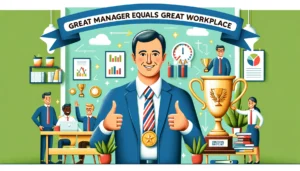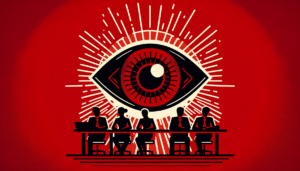Elevating employee engagement and productivity in a hybrid workplace
- 4 Min Read
Unlock the secrets to enhancing employee engagement and productivity in the ever-evolving landscape of the hybrid workplace and discover actionable strategies
- Author: HRD Connect
- Date published: Sep 12, 2023
- Categories

In a rapidly evolving landscape of work, the role of Human Resources (HR) has never been more pivotal. The questions surrounding employee engagement and productivity in a hybrid world have become both challenging and consequential. To shed light on these issues, Sage and HRD Connect recently co-hosted a timely webinar, “Enhancing Employee Engagement and Productivity in a Hybrid World through Technology.” The insights provided are particularly crucial for senior HR leaders looking to adapt and succeed in this new normal.
The multifaceted reality of hybrid work
The webinar started with a comprehensive overview of the current status of hybrid work, revealing it as a multifaceted reality. The panelists included Sheri Brissenden, Partner, HR at The Frameworks, Kajal Pankhania, Director of People & Culture at Privalgo, Ceara Metcalf – Director, Payroll & HR Strategy at Sage, and Ronel Oosthuizen, HRIS Director, People Operations at Sage.
All speakers noted that hybrid work models are diverse, with variations tailored to different industries, roles, and even individual employee needs. For senior HR leaders, this complexity demands a nuanced approach to workforce management that goes beyond the traditional paradigms.
Customization is key
Within this diverse framework, customization emerged as a key theme. HR leaders need to understand that not all roles or individuals can be managed with a single hybrid model. The need for job-specific and even person-specific flexibility is essential, calling for HR policies that are both adaptive and individualized.
Technology as the cornerstone
The discussion then turned towards the integral role of technology in sustaining and enhancing engagement and productivity in a hybrid setting.
A suite of tools
From video conferencing platforms to project management software, technology provides a suite of tools that can make hybrid work manageable and efficient. But the key lies in choosing the right mix of technologies that align with organizational objectives and workforce needs.
Data analytics and AI
One of the most compelling aspects of the discussion was the spotlight on AI and data analytics. These are not just buzzwords; they are practical tools that can provide actionable insights. Data can help HR leaders identify patterns related to employee engagement, job satisfaction, and even attrition risks, enabling pre-emptive action.
Employee well-being: the unspoken variable
The panelists took a detour to underscore the importance of employee well-being, a subject often relegated to the periphery but vital for long-term productivity and engagement.
Holistic tech solutions
Technology is now offering solutions that go beyond work management to include employee well-being. Platforms now offer built-in features for mental health resources, fitness tracking, and even mindfulness practices, making them invaluable tools for HR leaders concerned with holistic employee health.
The symbiosis between CFOs and HR
A noteworthy point was the importance of collaboration between the HR department and the financial overseers of the company, namely the CFOs.
Budget and ROI
As technology adoption accelerates, questions around budget allocation and ROI become increasingly pressing. HR leaders and CFOs need to collaborate to ensure that investments in technology and well-being programs align with long-term organizational goals and offer measurable returns.
Concluding thoughts
In a landscape that is as challenging as it is full of opportunities, HR leaders hold the reins of change. The adoption of the right technological tools, backed by data-driven insights and a keen focus on employee well-being, can spell the difference between a disengaged workforce and a thriving organizational culture. As we continue to navigate the intricacies of the hybrid work model, the role of HR as the custodian of both technological adoption and human capital becomes ever more critical.
The webinar underscored one thing above all: In a hybrid world, technology is not just an enabler but a strategic asset for HR leaders. It’s time to embrace it fully, but wisely, for the betterment of both the organization and its people.
Watch the full webinar by clicking here.









